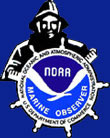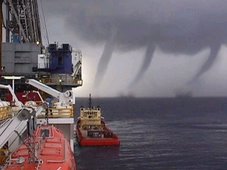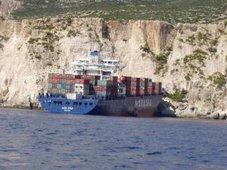 How Intense Will Storms Get? New Model Helps Answer Question
How Intense Will Storms Get? New Model Helps Answer QuestionScienceDaily (July 9, 2008) — A new mathematical model indicates that dust devils, water spouts, tornadoes, hurricanes and cyclones are all born of the same mechanism and will intensify as climate change warms the Earth's surface.
The new equation, developed by University of Michigan atmospheric and planetary scientist Nilton Renno, could allow scientists to more accurately calculate the maximum expected intensity of a spiraling storm based on the depth of the troposphere and the temperature and humidity of the air in the storm's path. The troposphere is the lowest layer of Earth's atmosphere.
This equation improves upon current methods, Renno says, because it takes into account the energy feeding the storm system and the full measure of friction slowing it down. Current thermodynamic models make assumptions about these variables, rather than include actual quantities.
"This model allows us to relate changes in storms' intensity to environmental conditions," Renno said. "It shows us that climate change could lead to increases in how efficient convective vortices are and how much energy they transform into wind. Fueled by warmer and moister air, there will be stronger and deeper storms in the future that reach higher into the atmosphere."
Renno and research scientist Natalia Andronova used the model to quantify how intense they expect storms to get based on current climate predictions. For every 3.6 degrees Fahrenheit that the Earth's surface temperature warms, the intensity of storms could increase by at least a few percent, the scientists say. For an intense storm, that could translate into a 10 percent increase in destructive power.
Renno's model is what scientists call a "generalization" of Daniel Bernoulli's 18th-century equation that explains how airplane flight is possible. Bernoulli's equation basically says that as wind speed increases, air pressure decreases. It leaves out variables that were considered difficult to deal with such as friction and energy sources (which, in the case of a whirling storm, is warm air and condensation of water vapor.) And in certain idealized situations, omitting that information works fine.
But by including these additional variables, Renno was able to broaden Bernoulli's equation to apply it to more general phenomena such as atmospheric vortices.
"The laws of physics are generally very simple," Renno said. "When you make assumptions, you are not representing the simple, basic law anymore. If you don't make assumptions, your equations have those simple, basic laws in them. It gets a little more complicated to get to the solution, but you don't introduce error, and you answer is more elegant, more simple."
Renno's work bolsters studies by others who say hurricanes have grown stronger over the past 50 years as sea surface temperatures have risen. This effect has not been extreme enough for humans to notice without looking, scientists say. Hurricane Katrina and Cyclone Nargis were not the most intense storm to hit land in the past half century. Other factors contributed to the devastation they caused.
This new model helps explain the formation of spiral bands and wall clouds, the first clouds that descend during a tornado. It's clear now that they are the result of a pressure drop where the airspeed has increased.
Renno says unifying convective vortices from dust devils to cyclones will help scientists better understand them.
"This is the first thermodynamic model that unifies all these vortices," he said. "When you unify them, you can see the big picture and you can really understand what makes them form and change."
A co-investigator on NASA's Mars Phoenix Lander mission, Renno has used his new model to calculate the intensity of dust storms in Mars' polar regions. He found that at the Phoenix landing site dust storms can have winds in excess of 200 mph.
Renno is an associate professor in the Department of Atmospheric, Oceanic and Space Sciences. Andronova is a research scientist in the Department of Atmospheric, Oceanic and Space Sciences.
WEATHER NOTE
Boy's body washes up at Indiana Dunes
Rafael Palomar, 13, pulled under while swimming Saturday
The body of Rafael Palomar, 13, was found washed up at Indiana Dunes State Park on Tuesday morning, three days after he was pulled under the waters of Lake Michigan while swimming with his family, authorities said.
A Gary man walking his dog spotted the boy's body just east of the park pavilion and notified police, according to the Indiana Department of Natural Resources.
The body was recovered about three-quarters of a mile east of where Rafael was last seen about 1:20 p.m. Saturday, when he and his younger brother were swimming in 3- to 5-foot waves off Porter Beach.
Bystanders pulled Rafael's 10-year-old brother from the water but were unable to reach the older boy, said Conservation Officer Gene Davis.
It was apparently the second drowning off an Indiana beach in the last three weeks. Both occurred in rough conditions with strong rip currents present, authorities said.
More on the Chicago Twister of 4 August 2008
Storm Chaser Steven Mirsky noted;
"DVN's sounding was noteworthy and ILX's was downright impressive. An enormous positive area, with CAPE of nearly 8600 J kg^-1 and LI of -16 C. A low LFC too with the EL pushing 100 mb"

From NWS Chicago ...Three Tornadoes Confirmed Thus far from Monday Evening's Storms....
Robin's Note; As of 5PM, 5 August 2008. NWS Chicago confirms a EF2 Tornado hit Griffith, Indiana. More to follow.......
The tornado wiped out the southern third of Parkersburg, Iowa. See the breathtaking scope of the disaster house-by-house, with photos and stories from the survivors. MORE
MARITIME NOTE
1 Pinoy killed another wounded in Panama-tanker ship blast
Sunday, July 27 2008 @ 07:21 PM EST
Contributed by: Don Winner
Sun Star.com - A FILIPINO seaman died in an explosion onboard a Panama-flagged marine tanker ship undergoing repair at a shipyard in the south of Athens last week, the Department of Foreign Affairs (DFA) reported Sunday. DFA spokesman Claro Cristobal named the fatality as 48-year-old Romualdo Jopia, of Pasig City. Jopia is chief mate of M/T Friendship Gas. Seven other persons were killed in the blast, including five Greek repairmen and two others of still undetermined nationality. Citing a report of Philippine Ambassador to Greece Rigoberto Tiglao, the DFA said another Filipino seaman identified as Arman Majillana and three other Greeks were brought to a hospital for lung injuries due to smoke inhalation. (more)
Majillana has since been discharged.
14 other Filipino seamen and other crew members were unhurt in the accident.
The explosion triggered a fire on the ship, which was then undergoing repair for its faulty LPG carrier at the Perama dockyard near Athens.
Cristobal said Jopia's remains will be repatriated next week.
Rescue crews were trying to remove the final three bodies from the Panamanian-flagged Friendship Gas tanker ship at the Perama shipyard 12 miles west of Athens, the Merchant Marine Ministry said.
Online reports quoted ministry officials saying that two people have been arrested on suspicion of not maintaining safety standards.
Dockworkers threw rocks and ripped up fencing outside the ministry's headquarters in Piraeus during a march Friday to protest the deaths and complain about safety conditions.
Riot police fired tear gas to disperse them.
The dockworkers called a three-day strike to protest one of the worst accidents to have hit the industry in Greece in recent years.
Last July, two workers were also killed while carrying out repairs on a ship at Perama. (ECV/Sunnex)
RS


































































































![Validate my RSS feed [Valid RSS]](valid-rss.png)